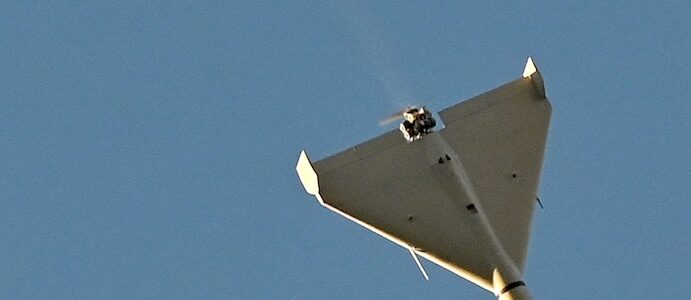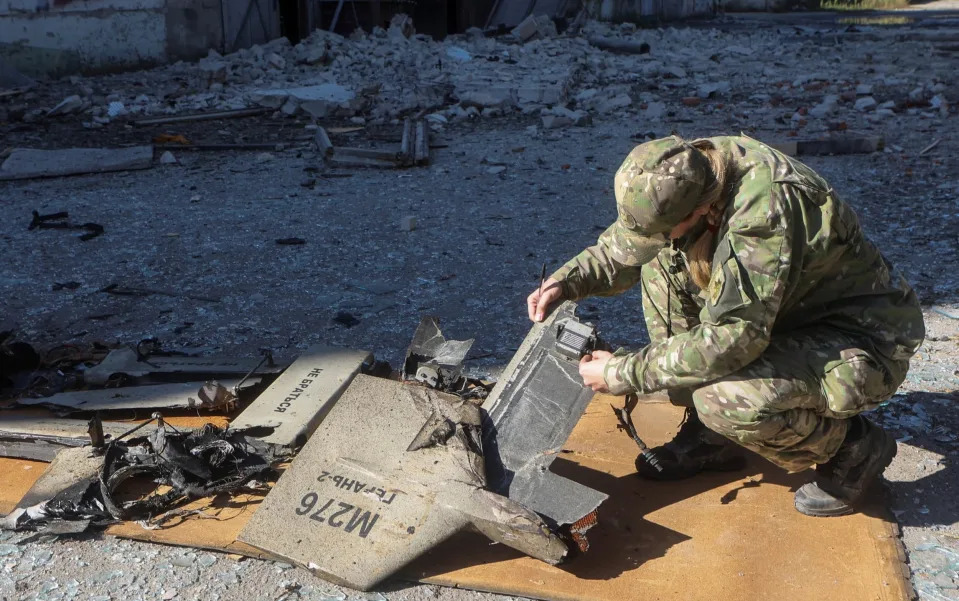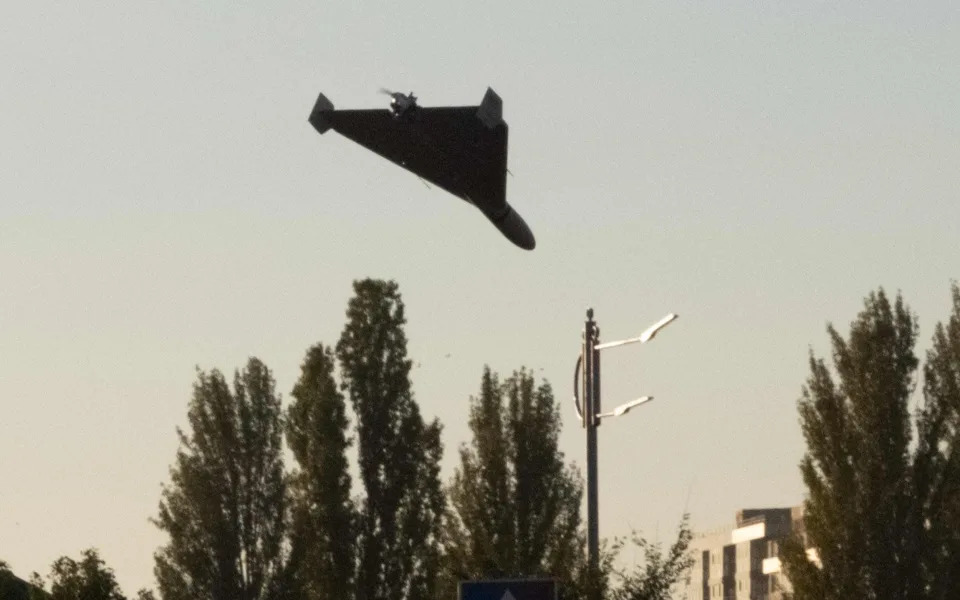

In 1944, residents of southeast England learnt to dread the stuttering growl of primitive pulse jet engines – the sound of the V1 flying bombs.

Today Ukrainians are becoming familiar with the sound of a new doodlebug – the Iranian Shahed-136 Kamikaze drone.
The distinctive whine of their cheap petrol engines has already seen it dubbed “the moped” by Ukrainian front line soldiers.

“All night and all morning, the enemy terrorises the civilian population. Kamikaze drones and missiles are attacking all of Ukraine,” President Volodymyr Zelensky said on the Telegram messaging app.
Russian forces have apparently obtained scores of the cheap, plentiful and potentially deadly Iranian-made drones. Like the Nazis in the Second World War, the Russians may hope these new weapons could turn the tide of the war in Russia’s favour.
Made by the Iran Aircraft Manufacturing Industries Company, the Shahed-136 entered service last year. With a range of up to 1,500 miles and carrying a warhead of 35 kilograms, the drones are designed to loiter overhead before striking targets. Ukrainian forces say they come in both Kamikaze and munition-launching variants.
Constructed from commercially available components – including mobile phone parts and model aircraft engines – the drones are easy and cheap to build with a supply chain that is difficult to disrupt with Western sanctions.
Their deployment comes amid signs that Russia is running out of other precision weapons. Last week, Sir Jeremy Fleming, the head of GCHQ, told BBC Radio 4’s Today programme: “We believe that Russia is running short of munitions.”
The waves of drone strikes are a rudimentary new form of terror, compared with the precision Kalibr cruise missiles which have been used to strike targets deep inside Ukraine.
The drones are estimated to cost less than £18,000 per unit. That’s a fraction of the cost of conventional Russian missiles, which range from about £270,000 for a Tochka-U up to £11.6 million for a x-101 cruise missile.
The relatively low speed of the Shahed-136 – just over 100 miles per hour – make them a tempting if difficult target for Ukrainian small arms fire. Soldiers in the Kharkiv region recently told The Telegraph that the drones are slow and visible enough to engage with small arms fire and that they had downed at least one using ordinary machine guns.
But their lack of defences is not a design flaw. The disposable drone is designed to be launched in swarms to overwhelm air defences. The drone is fired from launcher racks in stacks of five aircraft that take off with a booster rocket before switching to a petrol engine.
This, plus the size of their payload, means the drones pose a serious threat, Ukrainian commanders say.
Iran ‘becoming an accomplice in the war’
After the drones first appeared on the front last month, Brigadier General Sergei Melnik – the commander responsible for the defence of Kharkiv city – said that one that exploded just in front of the tank it was targeting “left a crater a man can stand up in”.
Tehran has carefully couched its denials about the Shahed-136, repeatedly rejecting accusations it has supplied Russia with weapons “to be used in the war in Ukraine”. But security officials told the Washington Post that Iranian technical advisors have visited Russian-controlled areas of Ukraine to provide training on operating the drones.

And Western security officials believe Iran plans to send more of these attack drones, as well as supplying Moscow with Iranian-made ground attack missiles for the first time.
The potential of Iranian Kamikaze drones to shape the war in Moscow’s favour has alarmed Ukraine’s European allies, with EU foreign minister’s meeting on Monday to discuss further sanctions on Tehran in response.
“These kamikaze drones that we are seeing in Ukraine apparently now – this is an escalation,” said Alexander Schallenberg, the Austrian Foreign Minister.
His Lithuanian counterpart said this was making Iran complicit in the invasion.
“Iran, with its drones and missiles, is becoming an accomplice in the war, in a similar fashion as Belarus,” Gabrielius Landsbergis said.
Credit: Yahoo News
